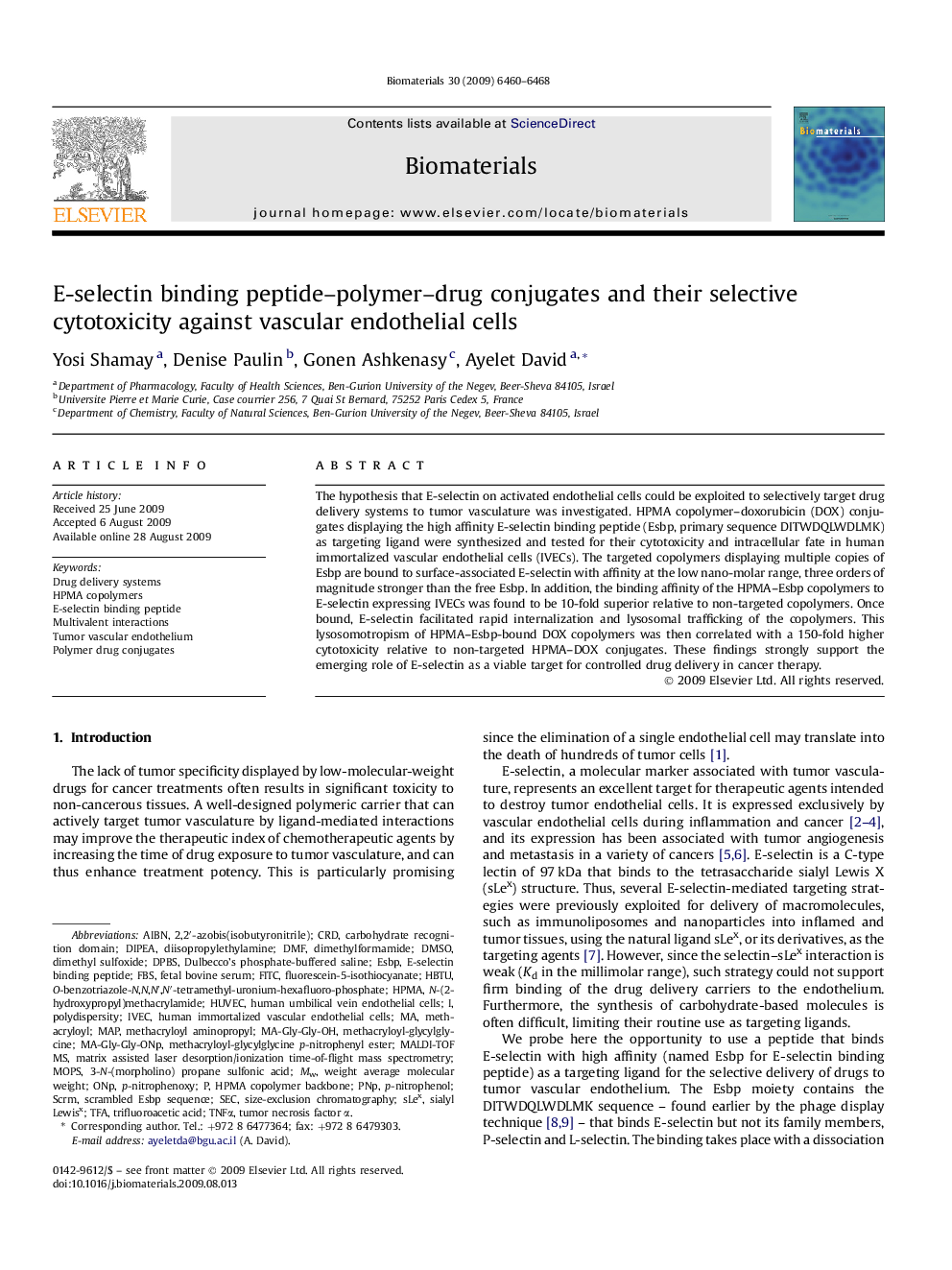| کد مقاله | کد نشریه | سال انتشار | مقاله انگلیسی | نسخه تمام متن |
|---|---|---|---|---|
| 10178 | 669 | 2009 | 9 صفحه PDF | دانلود رایگان |

The hypothesis that E-selectin on activated endothelial cells could be exploited to selectively target drug delivery systems to tumor vasculature was investigated. HPMA copolymer–doxorubicin (DOX) conjugates displaying the high affinity E-selectin binding peptide (Esbp, primary sequence DITWDQLWDLMK) as targeting ligand were synthesized and tested for their cytotoxicity and intracellular fate in human immortalized vascular endothelial cells (IVECs). The targeted copolymers displaying multiple copies of Esbp are bound to surface-associated E-selectin with affinity at the low nano-molar range, three orders of magnitude stronger than the free Esbp. In addition, the binding affinity of the HPMA–Esbp copolymers to E-selectin expressing IVECs was found to be 10-fold superior relative to non-targeted copolymers. Once bound, E-selectin facilitated rapid internalization and lysosomal trafficking of the copolymers. This lysosomotropism of HPMA–Esbp-bound DOX copolymers was then correlated with a 150-fold higher cytotoxicity relative to non-targeted HPMA–DOX conjugates. These findings strongly support the emerging role of E-selectin as a viable target for controlled drug delivery in cancer therapy.
Journal: Biomaterials - Volume 30, Issue 32, November 2009, Pages 6460–6468